Having a flat tire is not only a nuisance – sometimes, it can actually be dangerous.
But what causes our tires to go flat? And what can we do to help keep it from happening in the future? Read on to learn more about the six most common causes of flat tires, and what you can do to help minimize the chances of it happening to you.
One of the most common reasons for flat tires is also the most obvious – a puncture from a sharp object on the road, such as a nail, piece of glass, a screw, an industrial staple, or other sharp debris.
How to Avoid it: Avoid tire punctures and blowouts by driving around debris on the road whenever you can. If you’re driving through a parking lot, watch for garbage and debris left on the ground, such as broken glass bottles. Drive carefully near construction zones, and on poorly-maintained roads.
No driver is a fan of potholes, uneven roads, or unexpected debris – not only are they annoying, they can wreak havoc on your vehicle’s axles, undercarriage, and wheels. Simply put, the worse the road condition, the greater your chances of one of getting a flat.
How to Avoid it: As always, safe driving is the number one preventative measure you can take in order to keep bad road conditions from damaging your tires. If you are forced to drive on a road that is not in the greatest condition, you’ll want to make sure to slow down your driving speed, leaving extra space between your car and the one in front of you. That way, you can have more reaction time in order to watch for potholes, bumps in the road, and debris – and safely maneuver your car around them.
There’s not always one definitive, major reason for a tire going flat. Sometimes, the normal wear and tear that our tires go through is enough to cause them to go flat. Over time, normal driving will eventually wear down the tread on your tires, leaving them more susceptible to the everyday hazards of driving and increasing their chances of going flat.
How to Avoid it: It’s perfectly normal for your tires to wear and tear over time. There are a few things you can do, however, to help minimize it – avoiding fast starts and stops, getting your wheels aligned regularly, maintaining your recommended tire pressure, and getting your tires rotated regularly can help extend the life of your tires and help prevent them from going flat.
If your tire has no obvious signs of a puncture, check the valve stem to make sure it is not leaking. A leaky and damaged valve stem can cause your vehicle’s tires to go flat.
How to Avoid it: When going in for a regular car maintenance check or visiting your local tire shop, you can ask them to inspect the state of the valve stem. If it has become too old or dirty, it will most likely need to be replaced, which is something they can do for you.
For a safe ride, it’s important your vehicle has the correct tire pressure level. If your vehicle’s tires aren’t inflated properly, they can cause internal tire damage which can potentially cause a serious injury on the road.
If your vehicle’s tires aren’t inflated properly, they can cause internal tire damage which can potentially cause a serious injury on the road.
How to Avoid it: Ideally, tire pressure should be checked at least once a month and part of a routine car maintenance plan. You can check tire pressure by using a tire pressure gauge or having a certified mechanic do it for you.
Sometimes, the culprit of a flat tire isn’t a sharp object, a pothole, or even normal wear and tear. Did you know that your tires are most likely to go flat in the summertime? That’s because heat can actually cause a flat tire.
When the mercury rises, it causes the air in your tires to expand, and that increases the internal pressure in your tires – which, in turn, increases your risk of a leak or blowout.
How to Avoid it: Before you get out on the road, check your tire pressure – this will give you a more accurate reading than after you’ve been driving in the sun.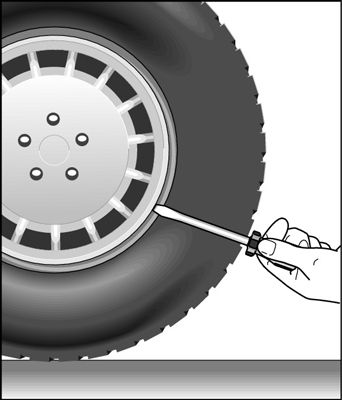 In the summer, it’s especially important to make sure you maintain proper tire pressure, and avoid driving with over-inflated tires.
In the summer, it’s especially important to make sure you maintain proper tire pressure, and avoid driving with over-inflated tires.
Your Basic At-Home Tire Repair Kit
What You Need to Know About Winter Tire Pressure
Is Your Car Road Trip Ready? 7 Questions to Ask
Car Category
October 15, 2018
The dreaded flat tire: it’s a common annoyance that most drivers have experienced at one time or another.
Facebook Twitter Courriel
Most drivers have experienced a flat tire at some point in their lives. If you’ve been in this unfortunate situation, you know the sinking feeling of seeing your vehicle with a flat tire. Blowouts that occur on the road late at night or in inclement weather are more than an inconvenience; they often create a situation that can seriously jeopardize a driver’s safety. There is no sure way to prevent flat tires, but general tire maintenance and an awareness of the underlying causes can help reduce the occurrence.
1) Puncture by Sharp Object
The most common cause of a flat tire is by a puncture due to a sharp object, such as nails or glass. Avoid puncture blowouts by driving around debris in the road or in parking lots whenever possible.
2) Failure or Damage to the Valve Stem
Valve stem issues are another common cause of tire problems. The valve stem is the tiny protrusion from your tire that you unscrew when you need to inflate it. A damaged or corroded valve stem can cause air to leak out of the tire, making it go flat. Loose or dirt-clogged stems can also cause tires to lose air.
3) Rubbed or Ripped Tire
A worn or ripped tire can create a dangerous situation for you and for other drivers on the road. Be sure to always check your tires for damage, such as deeply scuffed or worn areas or uneven wear on one side of the tire.
4) Tire Bead Leaks
Sometimes, air will leak from the tire bead, which is the edge of the tire that rests on the rim.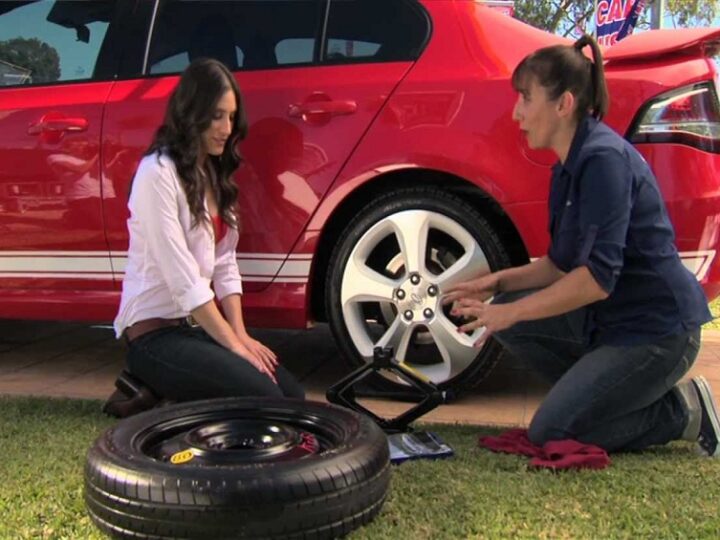 This leak can cause the tire to become flat over time. To check if there is a problem with the tire bead, spray your wheels and valve system with soapy water. If a steady stream of tiny bubbles emerges, you probably have a tire bead leak.
This leak can cause the tire to become flat over time. To check if there is a problem with the tire bead, spray your wheels and valve system with soapy water. If a steady stream of tiny bubbles emerges, you probably have a tire bead leak.
5) Vandalism
Typically, vandalism consists of someone letting the air out of your tires, which is easily remedied and will not result in the need for a replacement: simply reflate the tire and be careful where you park your car in the future.
6) Separation of Tire and Rim by Collision with Another Object
This type of separation usually occurs when your tire pops a curb or if you rub the wheel sharply against the sidewalk while parking. The tire slips slightly from the rim, causing a slow loss of air over time. This is generally not something you can fix on your own, but an experienced car mechanic will have the tools to take care of this easily.
7) Over-Pumped Tires
An over-pumped tire can create a dangerous pressure situation, often resulting in a blowout. To learn how to properly check tire pressure, see this detailed guide.
To learn how to properly check tire pressure, see this detailed guide.
8) Alloy Wheel Leaks
Car owners with aluminum wheels are encouraged to regularly check their tire pressure. If leakage becomes a recurring problem, bring your car to a mechanic for a professional fix.
9) Road Hazards
Potholes, uneven roads, and unexpected debris can wreak havoc on your car’s wheels, axles, and undercarriage.
10) Unexpected Damage
Sometimes there is no way to prevent a flat tire. Always drive safely and carefully, and follow proper procedures if you experience an unexpected blowout on the road: don’t slam on the brakes, allow the car to slow naturally while steering to the side of the road, turn on your hazard lights, and don’t attempt to change the tire yourself unless you are several feet from moving traffic.
Thankfully, the roadways in Southern California are wide and well maintained, allowing for a generally smooth driving experience. However, a flat tire can happen to anyone, so it’s important to remain vigilant when it comes to car maintenance and safety. If you’ve experienced a flat tire and need the help of a professional, or if you require a replacement, the friendly team at Evans Tire is ready to help. Call today!
However, a flat tire can happen to anyone, so it’s important to remain vigilant when it comes to car maintenance and safety. If you’ve experienced a flat tire and need the help of a professional, or if you require a replacement, the friendly team at Evans Tire is ready to help. Call today!
Home > Knowledge > Contents
Product Categories
Contact Us
Add: No. 2, Chonggong Road Donggang, Fuhai, Cixi, Ningbo, Zhejiang
MobChina
Phone: +8615988185519
Tel/Fax: + 86-574-56776640
E-mail: [email protected]
When we are driving or driving a car, we may have encountered this situation. During hot summers, the tires will generate heat when the car runs long distances. The air will expand when it gets hot, so we need to put the tires on correctly. Gasoline, then how to put it in if the tire is tied, how to let off the gas as quickly as possible to get the fastest deflation?
1.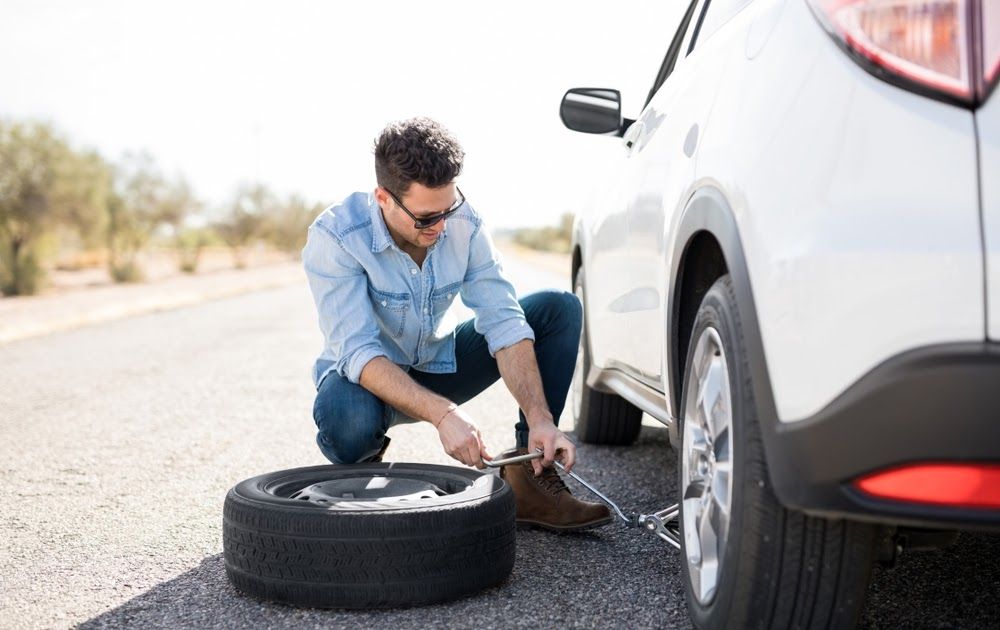 Locate the tire valve first. It emphasizes a short 2.5-5.1 cm wheel keel tube and has a small cap to cover the inflation hole at the end. Keep dirt and dust out of the valve. nine0003
Locate the tire valve first. It emphasizes a short 2.5-5.1 cm wheel keel tube and has a small cap to cover the inflation hole at the end. Keep dirt and dust out of the valve. nine0003
2. Turn the cover counterclockwise to remove it. At this time, a swollen hole was opened. Be careful not to lose this cap, it is easy to forget it in your pocket.
3. If you have a test tire gauge, you must screw the gauge onto the tire valve and the display will show the tire pressure. Then refer to your normal tire pressure, which should be (instructions will be offered). nine0003
4. If you want to deflate the tire, use a screwdriver or nail or something else, metal tweezers (metal pin) in the middle of the top valve. When you apply pressure to the pin, air will flow out of the valve and you will listen. The sound of a buzz. Raise your pressed hand and let the deflation stop.
5. If you want to bleed all the air out of the tires, use a jack to raise the car on the flat side before deflation to avoid damaging the tires and wheel keels.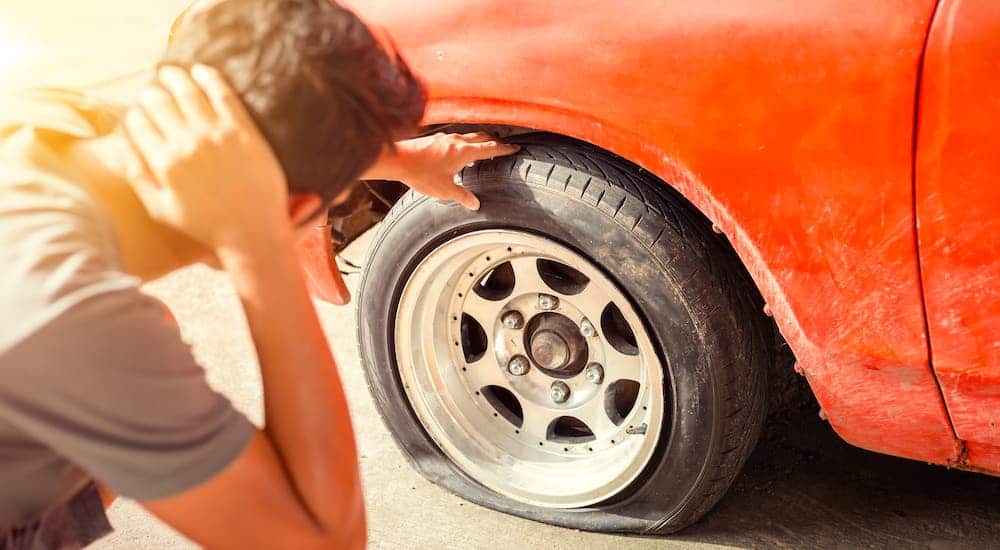 Then blow away. nine0003
Then blow away. nine0003
6. If you want to bleed all the air out of the tires as soon as possible. You can use a valve key to insert the valve, or use long needle nose pliers to turn the metal rod inside the valve counterclockwise. Your tires will lose air at a faster rate. Use this method if you want to deflate quickly.
 ..
.. related products
Clean tire inflation gun
1.5 Inch Smart Tire Pressure Sensor
Small dial gauge
Presta Valve Bike Tire Gauge
Autozone tire pressure sensor
Steel Economy Dual Scale Pressure Gauge
Content:
Finding a puncture in the water .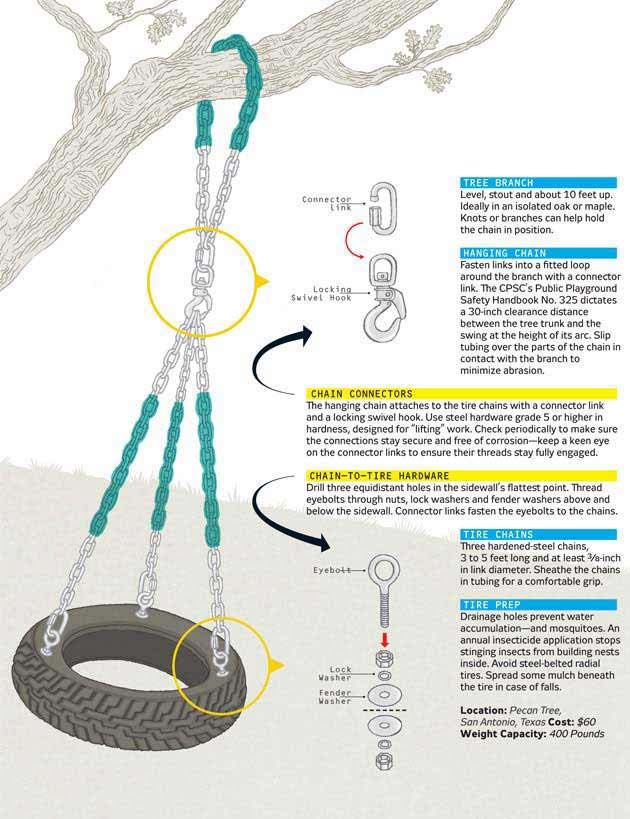 And even the masters are sometimes lost, realizing that the tire is visually intact, but deflates. There are several solutions to this situation.
And even the masters are sometimes lost, realizing that the tire is visually intact, but deflates. There are several solutions to this situation.
Tip!
First of all, you can try to inflate the tire by 1-1.5 atm and listen to see if it bleeds air. If you can't hear it, you should wet the wheel with soap and water and find the area in which air is bubbling. If there is no result here, you need to lower the entire tire into the water. nine0003
It often happens that a removed wheel retains air, and if you put it on a car, it blows off. Followed by:
What can happen if you drive with a flat tire? It is clear that the time for which the tire deflates can be different.
If the tire is punctured with something sharp, it is quite possible that the wheel will hold pressure for a certain period. On such tires you can get to car service
Move carefully. Along the way, it is correct to inspect the tire from time to time and, if necessary, inflate the tire
Along the way, it is correct to inspect the tire from time to time and, if necessary, inflate the tire
The pumping device should be taken with you.
However, what to do if the tire is completely deflated and it is impossible to inflate it, is it allowed to move on? In theory, of course, it is possible, but such a movement threatens with trouble. First of all, the ride will be with a complete lack of comfort. And the second moment, both the tire and the disk will have to be thrown away in the future, and this is an additional cash outlay. nine0003
Drunk driving on someone else's car again
Let's start with the spool. This problem is trivially simple and occurs on all types of wheels. Parts of the valve, which should allow air from the boost pump and prevent it from escaping, wear out, or there may be a manufacturing defect.
If bubbles appear, even very slowly, then the spool needs to be replaced, it costs a penny. Also, perhaps the part is simply not tightly fixed. It is necessary to take a special key or a cap with a corresponding connector on the back and try to screw the spool all the way. nine0003
Also, perhaps the part is simply not tightly fixed. It is necessary to take a special key or a cap with a corresponding connector on the back and try to screw the spool all the way. nine0003
If the spool “poisons”, you need to take a special key and try to tighten the spool to the stop
As for the fitting, this problem is more relevant for tubeless tires. This element may look quite serviceable, but it does not fit snugly against the metal at the junction with the disk. Here you will also need a soap solution. This is a very common problem, the solution of which, even for all four wheels, will not result in noticeable cash outlays.
Leaking fitting may start over time when the rubber loses its properties. Also, the descent can be episodic - during cold snaps, when the part decreases in size by microns and does not hold pressure so tightly. nine0003
What are the wings in the car
It is possible that the cause of the air loss was the loose fit of the edge of the tire to the rim of the rim. This is true for tubeless tires. This is also checked with a soap solution. In this case, it is better to remove the wheel from the mounts and install it horizontally. Then it will be possible to see exactly whether the bubbles are inflating. A similar situation arises due to damage to the contact zone of the disk or tire. But more often - it is the disk: curvatures from pits and curbs, cracks, corrosion. nine0003
This is true for tubeless tires. This is also checked with a soap solution. In this case, it is better to remove the wheel from the mounts and install it horizontally. Then it will be possible to see exactly whether the bubbles are inflating. A similar situation arises due to damage to the contact zone of the disk or tire. But more often - it is the disk: curvatures from pits and curbs, cracks, corrosion. nine0003
The tightness of the edge of the tire to the rim can be easily checked with soapy water
Do not be surprised, for example, if it turns out that the whole thing is in peeling enamel, which is painted on the inside of the wheel. Everything must be in perfect condition. Also, tire fitters can additionally use sealing compounds, which then from increased loads, or simply can collapse over time.
Motorists often complain about the dependence of such manifestations on temperature changes. Here we look at the previous paragraph - the rubber shrinks a little, the adhesion force of the walls drops, air leakage occurs
Particular attention should be paid to this option for owners of tires that have been in service for more than 5 years.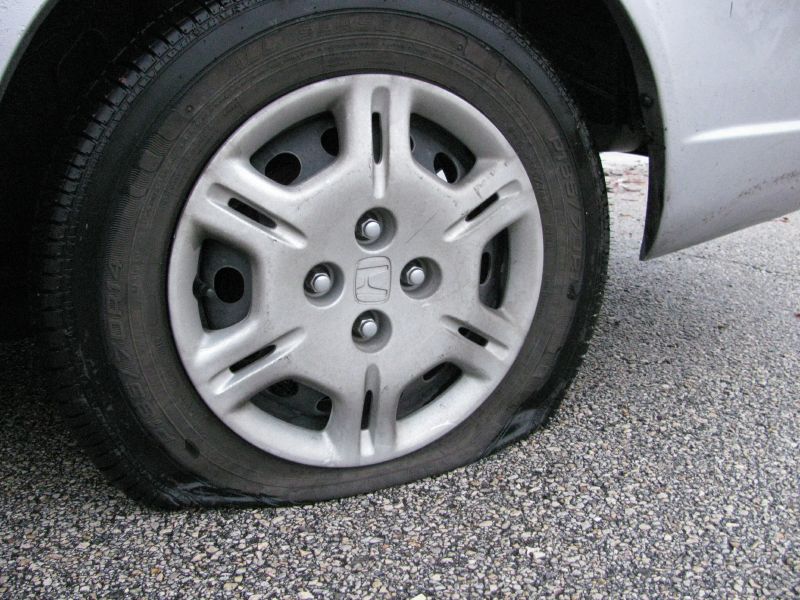 Tires in such a list are in the first place. However, if the wheels are relatively new, but after a long period of inactivity they gave out a shortage of a couple of tenths of an atmosphere, then you should not panic and go to the service station. For long periods of inactivity (say, a couple of months), this is a normal pattern. In general, experts recommend updating the pressure 2-3 times a month. nine0003
Tires in such a list are in the first place. However, if the wheels are relatively new, but after a long period of inactivity they gave out a shortage of a couple of tenths of an atmosphere, then you should not panic and go to the service station. For long periods of inactivity (say, a couple of months), this is a normal pattern. In general, experts recommend updating the pressure 2-3 times a month. nine0003
Tubeless tire
But no matter how good and reliable a wheel with a tubeless tire is, it can also go flat. Reasons for a flat tire:
As stated above, a tubeless wheel will not deflate even after multiple punctures, but this is only possible if the element that punctured the tire remains in the tire. The inner surface of the tubeless tube is covered with a special viscous compound that sticks to a nail, self-tapping screw, wire and prevents air from seeping out. But if the pierced object is pulled out, then the viscous composition will not be able to tighten the hole and the air will come out.
But if the pierced object is pulled out, then the viscous composition will not be able to tighten the hole and the air will come out.
Therefore, if a foreign object is found in the tire, do not rush to pull it out. It is better to leave it in place and continue to operate the car, and when you get to the service station, pull out the protruding element and seal the breakdown site. nine0003
But it happens that after a puncture, the object does not remain in the wheel and such a tire will flatten. The rate of air bleeding depends on the size of the damage. In some cases, the deflation of the tire is so slow that the loss of half the air pressure takes several days. With such a puncture, it is enough to periodically pump up the wheel and continue to drive the car, and contact the service station as soon as possible.
But slow descent is not always the case. If a large hole is formed (for example, when hitting a rebar), the wheel will be lowered in a matter of minutes. nine0003
Tire cuts are less common than punctures. And such damage appears on the sidewalls, since it is difficult to cut through the working surface of the tire. The most common cause of a cut is clinging to the sidewall of sharp objects and protrusions. Cut - serious damage to the wheel. With mild cuts, you can still try to restore the wheel (at the service station), but if the size of the cut is long and through, then the tire must be replaced. Note that some service stations offer to restore a wheel with a severe cut, but it is better to refuse this service. When cut, the cord is damaged and it will not be possible to restore its integrity. Even if the wheel does not deflate, it can “shoot out” at any moment during movement, and this phenomenon is very dangerous. nine0003
And such damage appears on the sidewalls, since it is difficult to cut through the working surface of the tire. The most common cause of a cut is clinging to the sidewall of sharp objects and protrusions. Cut - serious damage to the wheel. With mild cuts, you can still try to restore the wheel (at the service station), but if the size of the cut is long and through, then the tire must be replaced. Note that some service stations offer to restore a wheel with a severe cut, but it is better to refuse this service. When cut, the cord is damaged and it will not be possible to restore its integrity. Even if the wheel does not deflate, it can “shoot out” at any moment during movement, and this phenomenon is very dangerous. nine0003
Peeling of the tire from the rim occurs when the wheel is subjected to severe shock loads that lead to disk deformation. This happens when you hit a hole at speed. A strong impact causes the impact energy to reach the disk, and the metal bends.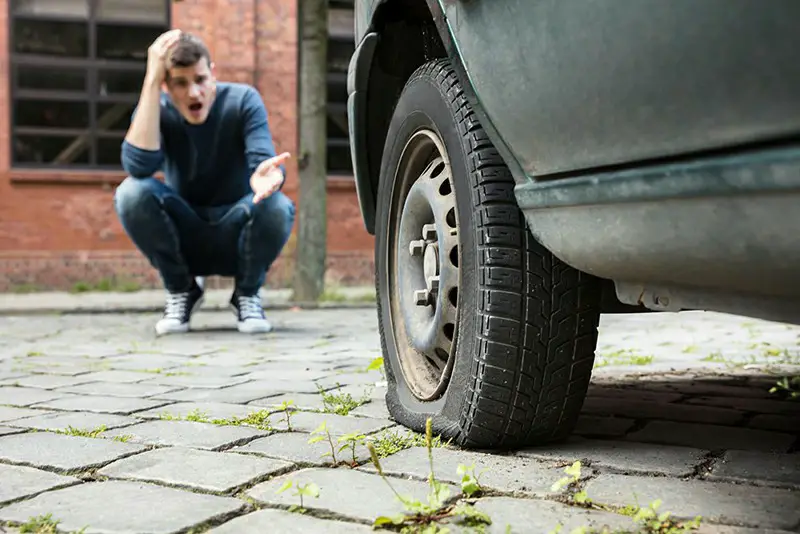 As a result, the tire no longer fits snugly against the disc and the air escapes through the gap formed. This problem did not exist in tubed tires, and the flexing of the disc did not cause the wheel to deflate (provided that the tube remained intact during the impact). nine0003
As a result, the tire no longer fits snugly against the disc and the air escapes through the gap formed. This problem did not exist in tubed tires, and the flexing of the disc did not cause the wheel to deflate (provided that the tube remained intact during the impact). nine0003
Tubeless valve assembly
Disc warp is a problem that cannot be fixed on the road. It is possible to restore the geometry of a part only on special rolling machines available at the service station.
Lowering the wheel through the spool is quite common. The defective element is unable to hold air. Here it is enough to replace the spool, and pump air again.
But if air etching occurs at the place where the nipple is installed, then a visit to the tire shop cannot be avoided, since it is necessary to glue the nipple, and for this the wheel is disassembled. nine0003
Something else useful for you:
Breakage of the nipple
You can also detect a blown wheel when the rubber adheres poorly to the rim of the disk.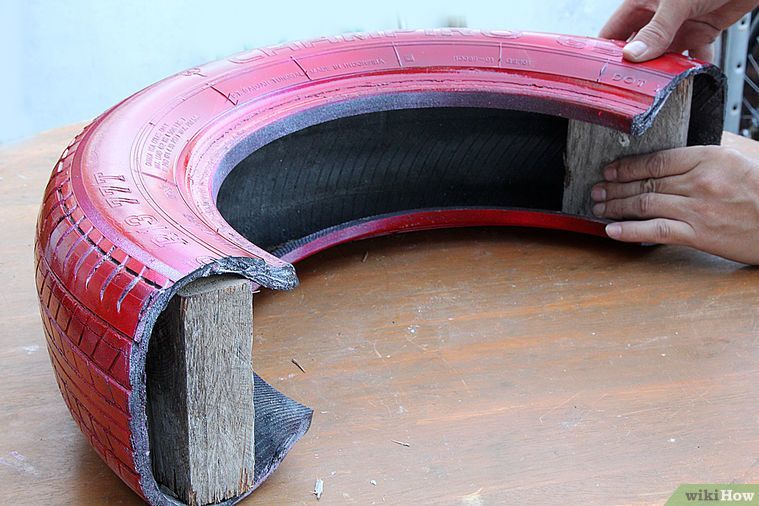 This means that grains of sand or something small have penetrated between them, for example, corrosion of the rim itself. Here you need to pump up the "injured" wheel and visit a tire shop, because the tire will continue to run flat until the masters straighten the disk. In addition, the same problem may develop because the product was stored incorrectly, and the rubber is slightly “glass”. nine0003
This means that grains of sand or something small have penetrated between them, for example, corrosion of the rim itself. Here you need to pump up the "injured" wheel and visit a tire shop, because the tire will continue to run flat until the masters straighten the disk. In addition, the same problem may develop because the product was stored incorrectly, and the rubber is slightly “glass”. nine0003
Air also leaves the rubber if the nipple element breaks. If the nipple element is simply wetted with saliva and the surface is found to be bubbling, this means that it should be urgently replaced. Car service masters will help to replace the nipple, however, with experience, it is really possible to do this simple work yourself. In this case, you need to prepare:
A tire without a tube at low temperatures can easily deflate, this is due to the fact that even expensive types of tires harden during frosts, and this provokes a loss of tightness.
It is enough to heat the tire and the problem will be eliminated. However, this, of course, is not a solution, you should visit a tire shop, and the master will remove the tire from the disk, coat the rim with a hermetic substance and complete the assembly, then the problem will be resolved, the tire will stop deflating. nine0003
The first category includes punctures, cuts, disc deformations. Everything related to road conditions, and sometimes - the way you drive.
For the second - operational problems - the nipple is leaking.
To the third - technological problems.
Punctures, cuts, dents in the disc can be found by visual inspection. If this does not help, you can make a soapy solution and spray the wheel - air bubbles will indicate a puncture. However, if the puncture is very small, such a search can turn into torture: in this case, it is better to submerge the wheel completely in a suitable container of water. You can also find a defect when it etchs between the disc and tire, and if there is a problem with the nipple. nine0003
You can also find a defect when it etchs between the disc and tire, and if there is a problem with the nipple. nine0003
The leakage of the nipple is easily determined with the help of water: everything is simpler here, you don’t need to bathe the wheel - unscrew the cap, wet the nipple nipple - if the air poisons, you will see it by inflating the air bubble.
Technological problems. A very rare defect inherent in low-quality rubber. Without going into details, I will say: there is such a thing as diffusion. This is the process of penetration of molecules of one substance into another. In other words, air passes through the rubber. Sounds crazy, but this is the physical law of our world. Such a defect is extremely rare, and the diffusion rate is so low that it can be overlooked. You just have to understand why the wheel, although rare, needs to be pumped up. nine0003
If a problem has been identified and you cannot fix it yourself, then it is not shameful to do the same as experienced drivers - go to a tire fitting, preferably a quality one, on which dubious patches are not molded. Also, there must be a balancing stand at the installation - wheel balancing after repair is not even discussed. But knowing in advance how much time you will spend is very difficult. Perhaps the puncture is small, and will be eliminated with the help of a special fungus within 15 minutes, or vulcanization may be required, with complete disassembly - from 30 minutes to an hour. nine0003
Also, there must be a balancing stand at the installation - wheel balancing after repair is not even discussed. But knowing in advance how much time you will spend is very difficult. Perhaps the puncture is small, and will be eliminated with the help of a special fungus within 15 minutes, or vulcanization may be required, with complete disassembly - from 30 minutes to an hour. nine0003
I have repeatedly heard a similar question, the answer is - nothing will happen, ride on your health. But there are a couple of things to keep in mind.
First, you don't know the reason for the flat tire. No one will guarantee that a slowly flattening tire will not go down quickly, somewhere in the steppe, and you are without a spare wheel, and outside the coverage area of mobile communications. Or, even worse: perhaps a defect has formed on the inside of the tire - you can't see it. Jokes are bad with this: if the wheel lowers regularly, look for the reason.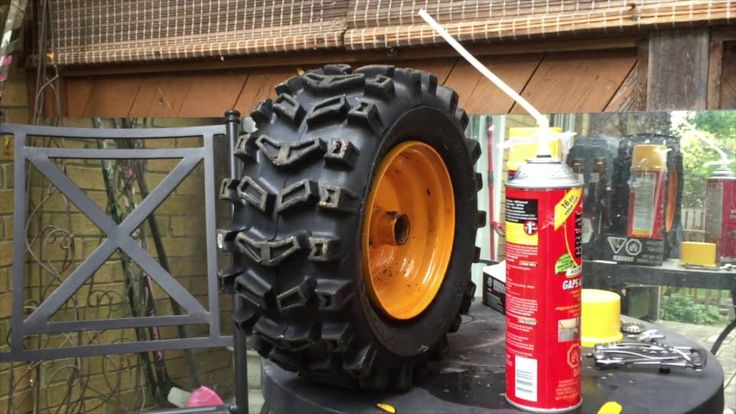 nine0003
nine0003
Second, be sure that one day you will forget to pump up the tire and drive on empty. And then, while you figure it out - you can easily chew on a tire, so think about it - is it worth it?
What to do if you notice a flat tire too late and drive with a flat tire. The first and only thing is to put a spare. The principle: "I've already spoiled the rubber, I'll pump it up and I'll get there" is unacceptable. The fact is that serious tire deformations that occur when driving on a flat tire are primarily associated with the cord, and may not be noticeable outwardly. The cord is the threads (synthetic and metal) that are inside the rubber and serve as the frame of the wheel. And if several threads burst, there is no guarantee that when hitting a bump, or getting into a hole, the wheel will not “shoot out”. Do not joke with safety - at the tire shop they will tell you whether the wheel is good or not. nine0003
And finally, with your permission, a little advice. Quite often, with a side cut, some craftsmen suggest inserting a camera into a tubeless wheel. Agree to such a scam only in a hopeless situation. The fact is that with a strong deformation of the tire on the road (bump / pit), the camera can crawl into the cut and break. The consequences of an unexpected, and most importantly, instantaneous descent of the wheel, at speed, can be unpredictable. Depending on the traffic situation, even a professional can be powerless in such a situation. Do not think that I scare, but the wheels are your safety on the road - do not tempt fate. nine0003
Agree to such a scam only in a hopeless situation. The fact is that with a strong deformation of the tire on the road (bump / pit), the camera can crawl into the cut and break. The consequences of an unexpected, and most importantly, instantaneous descent of the wheel, at speed, can be unpredictable. Depending on the traffic situation, even a professional can be powerless in such a situation. Do not think that I scare, but the wheels are your safety on the road - do not tempt fate. nine0003
Also: inserting a tube into a tubeless tire (in any case) will cause air to collect between the tube and the inner surface of the tire. And this will lead to excessive heating of the wheel.
Let your journey be comfortable and safe, and questions: what to do if a flat tire? remain on paper.
Especially for the site "driving after 30."
A large number of modern cars are equipped with tubeless wheels. Unlike tube tires, they make it possible to save tire pressure for a certain period, which ensures safety. Sometimes it happens that the owner of a car on tires without a tube drives with a screw in the tread for 2-3 months and does not notice anything. Naturally, serious punctures are not meant here. nine0003
Sometimes it happens that the owner of a car on tires without a tube drives with a screw in the tread for 2-3 months and does not notice anything. Naturally, serious punctures are not meant here. nine0003
Hitting a curb
When a driver pierces a tube wheel, it will instantly deflate.
If you have flat tires on your car, what to do
It is important to understand that a flat tire can cause a serious accident, especially if the car is moving at a high speed
Therefore, professionals advise every driver who still has tires with a tube to change them to tubeless ones.
Why did the tire break? What to do in a difficult situation? Experienced car owners know about this. Feeling that the car tilted due to the fact that the wheel was pierced, it is necessary to identify the cause of what happened. Possible problems:

 The disk can be deformed either due to a poor-quality track, or when the motorist does not yet have driving experience (hitting the auto disk on a curb stone when parking in parallel and other oversights). Straightening the autodisc will help resolve the situation without harming the tread itself.
The disk can be deformed either due to a poor-quality track, or when the motorist does not yet have driving experience (hitting the auto disk on a curb stone when parking in parallel and other oversights). Straightening the autodisc will help resolve the situation without harming the tread itself. It should be clarified that:

When changing a wheel, follow the following order:
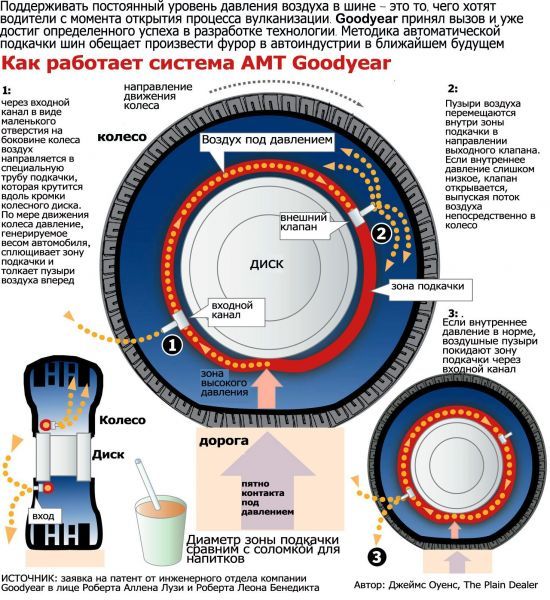 b), slightly open the jack so that the groove in the upper part of the jack sits on the lower profile of the body C opposite mark D (fig. b) (about 72 cm from the center of the front wheel or 75 cm from the center of the rear wheel).
b), slightly open the jack so that the groove in the upper part of the jack sits on the lower profile of the body C opposite mark D (fig. b) (about 72 cm from the center of the front wheel or 75 cm from the center of the rear wheel). 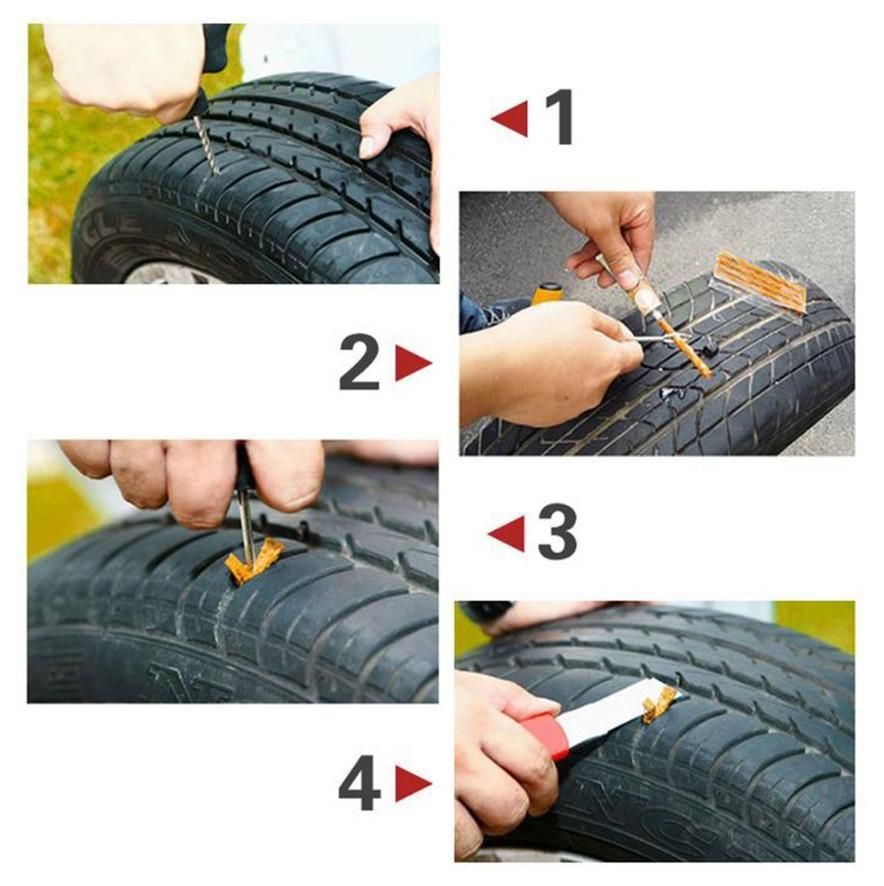 8.
8. Solving the problem with a flat tire on the way depends on the equipment of the car. So, during the movement there were loud "squishing" sounds. These are clear signals that the tire has flattened. If the air has escaped from the front wheel, then the controllability of the car will also worsen significantly - the car will begin to pull strongly to the side. In this case, you should immediately smoothly and gently stop the movement. nine0195 The simplest solution is to use a spare tire. But for this, a spare wheel, a balloon wrench and a jack must be present in the car. This is the minimum set, it is also desirable to keep an emergency stop sign, wheel chocks, a pump or an autocompressor in the car.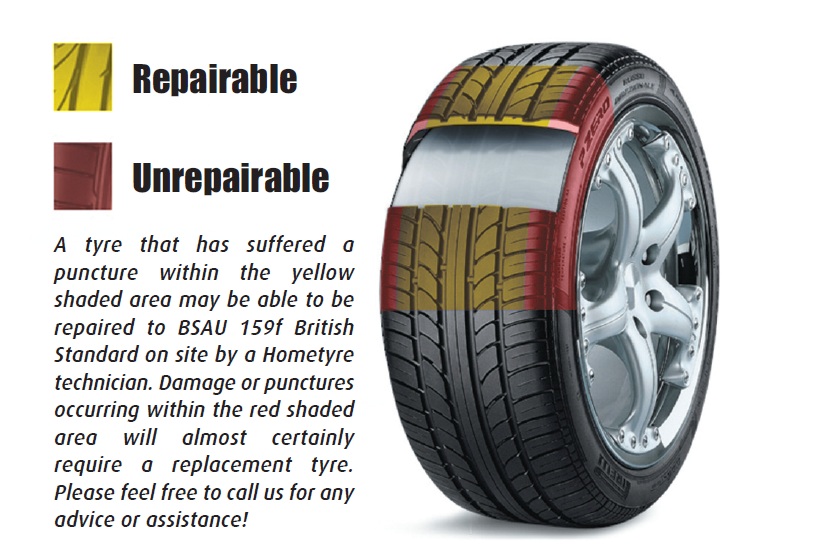
And then everything is simple:
Before starting work, be sure to check which spare tire is available. The fact is that dokatki should not be installed on a controlled axle. Therefore, if there is a dokatka in the event of breaking through the front slope, you will have to tinker - remove the full-size wheel from the rear axle and put a dokatka instead, and replace the broken one with a normal one. At the same time, while driving, you should observe the speed limit, no more than 60 km/h. nine0003
nine0003
Another solution to the problem is to use a "first aid kit" to repair tubeless tires. But you need to buy it in advance and carry it in the car.
Such a first aid kit includes tools and means for eliminating punctures and cuts
But when using a first aid kit, it is important to follow the technology of sealing a puncture.
If there is no spare tire and "first aid kit", but there is a pump or compressor, then pump up the tire and set the rate of descent. If the air poisons slightly, then on such a wheel you can get to the nearest tire shop, periodically stopping and pumping up the wheel
Worse if no tools or equipment are available and the chute descends very quickly. In this case, you will have to continue to move on such a wheel. But at the same time, you should move at the lowest possible speed, with the emergency gang on, and preferably on the side of the road.
https://youtube.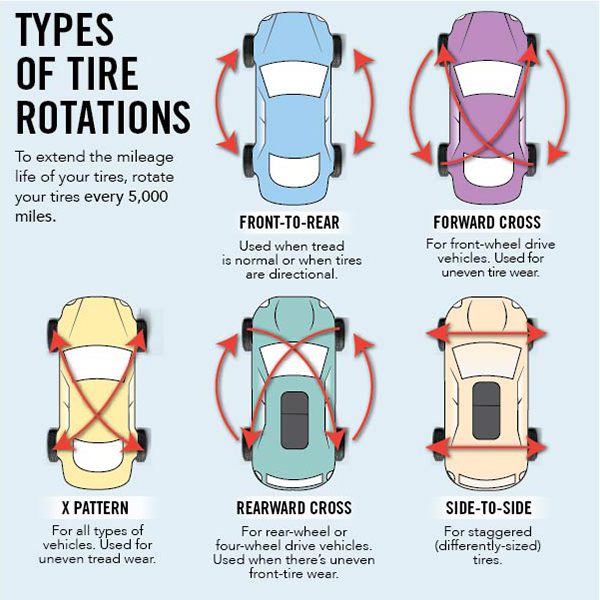 com/watch?v=_M3jrV2Aikk
com/watch?v=_M3jrV2Aikk
On a flat tire, you can drive to the place of repair, but after such a trip, the tire cannot be restored. In addition, a trip in such conditions will create serious stress on the transmission elements, which will shorten their service life. nine0003
Therefore, it is better to carry a tool kit, a first aid kit for tires and a spare wheel in the car. With such equipment, the breakdown will not be taken by surprise.
Every driver must be aware of the seriousness of the situation so that even the temptation to ignore a leaky tire does not arise. Any delay will only exacerbate an already dangerous situation. On a flat tire, you can only drive to the nearest tire shop. But no more. nine0003
A tire is not a piece of rubber on a rim. It is a complex structure in which every detail plays its role. Automobile rubber consists of several layers. For the production of each of them, a special fiber is used and special technologies are used. Even the tread pattern is not created for beauty. A team of specialists is working on its development, numerous tests are carried out so that the functionality of the drawing is maximum.
Even the tread pattern is not created for beauty. A team of specialists is working on its development, numerous tests are carried out so that the functionality of the drawing is maximum.
If the wheel leaks air, then its functionality is impaired. When driving on such tires, the following situations arise:

Now you can tell whether you can drive with a flat tire. The situation is extremely clear. But what to do if there is no other way out and you really need to drive on your own to the tire station? nine0003
Next, we have to figure out how much you can drive on a flat tire and how to do it correctly. This information will be useful to every driver, because no one is immune from the occurrence of such a problem.
There are many reasons why a tire may start to deflate. The most common situations are:
